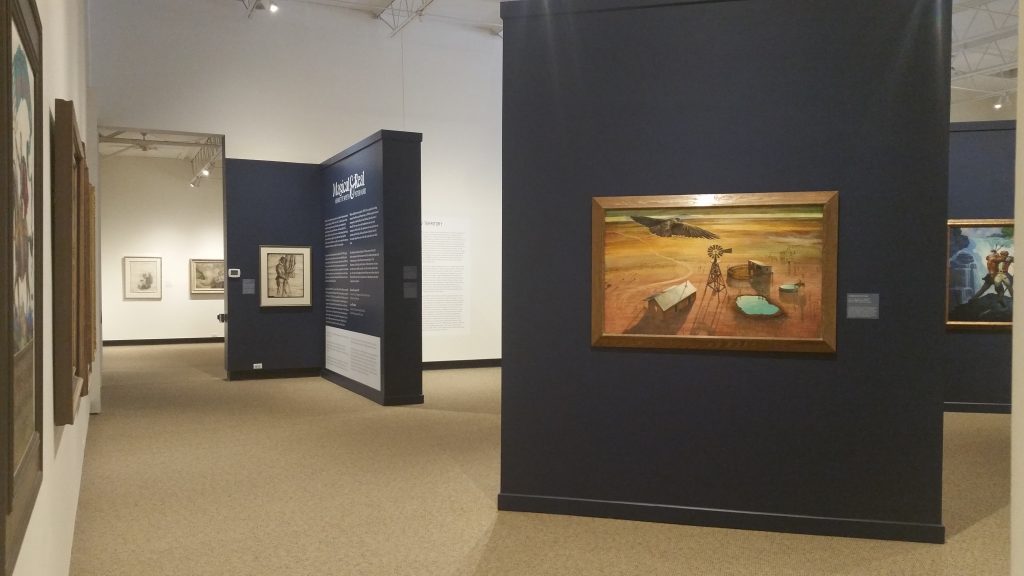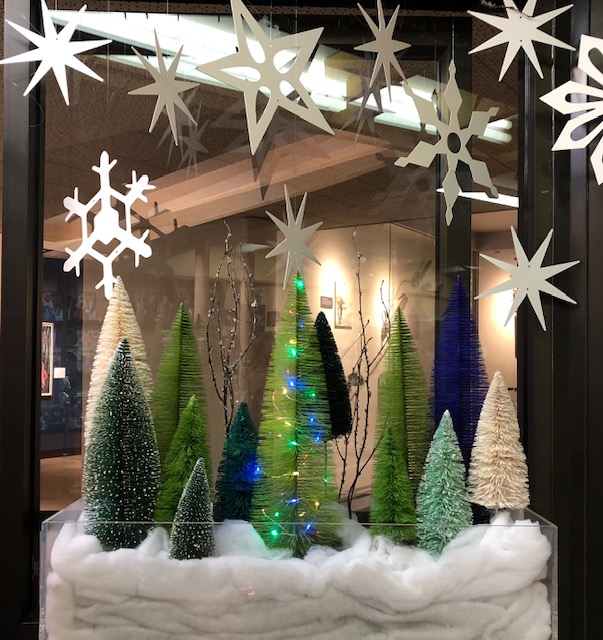For the last couple of

I became interested in consumer culture while reading one of our class-assigned books, Empire of Things, and decided to take a closer look at museums. Rather than focus on collections, however, I’ve been more interested in the role of mundane stuff, the paper, matboard, pencils, paint, and other materials that enable museums to fulfill various social and cultural functions. For examples, I’ve been using my experiences at the Roswell Museum, as I had plenty of opportunities there to observe how it uses things to engage different publics.

Museum literature rarely discusses commodities directly, taking their necessity to operations as a given. Analyses of physical museum spaces such as Carol Duncan’s Civilizing Rituals explore the ways in which museums architecturally emulate the sacrosanct atmosphere of temples or churches, but these works focus primarily on aesthetic impact rather than the actual implementation of commodities. Analyses of exhibition planning, educational programs, or other activities generally focus on intellectual objectives or the logistics of implementation without discussing the actual commodities required to implement them. Financial discussions about museums also deemphasize commodities, focusing instead on the omnipresence of tight budgets. While studies recognize the challenge of meeting overhead costs, they do not discuss the actual commodities comprising these operations, reiterating instead an established narrative of museums as struggling institutions facing dwindling sponsorship and visitation.

Yet museums are significant consumers, and their various activities employ a variety of material goods and services. The reifying presentations of objects that Duncan describes rely on objects such as pedestals, light fixtures, customized paints, and other material products designed to create a liminal spatial experience and underscore the specialness of the objects within it. Object conservation and preservation is equally invested in things, with acid-free mats, Mylar sheeting, twill tape, foam core for mounts, hygrothermograph readers, and a litany of other products required to maintain the safety of various collections. Classes, special programs, and other education initiatives require supplies such as paint, paper, or pencils, while on a grander scale, an expectation toward universal design and accessibility requires spending on architecture.

Whereas my other two projects have directly addressed the Roswell Museum’s WPA archive, I took a more
Of the three projects, this has been the hardest assignment to complete, but not because I’m unfamiliar with the subject matter